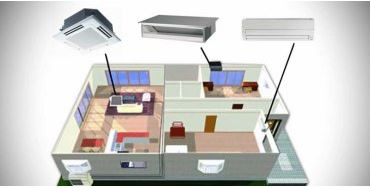Best outdoor air conditioning unit location for Sydney terraces to avoid neighbour complaints
Verdict: For Sydney terraces, the best outdoor condenser location is usually low in a rear courtyard on a concrete slab with vibration pads, angled away from the boundary, and with clear airflow—not on a shared side wall or balcony. Smart placement reduces noise at the fence and keeps you inside local rules for Air Conditioning Sydney installs.
This 2025 guide is for homeowners planning air conditioning installation Sydney who want fewer air conditioner noise complaints Sydney. We’ll cover best outdoor unit placement Sydney terrace, air conditioner distance from property boundary NSW, and simple acoustic tricks.
Author E-E-A-T: ACG Air Conditioning Guys — Sydney
Interactive: terrace noise-risk estimator (neighbour side)
Adjust the sliders. Lower is better. Use this to compare mounting options before you install.
Estimated neighbour noise-risk
MediumBetter plan
- Keep ≥ 2 m from boundary if possible
- Use slab + pads, angle fan away
Outdoor unit basics for terraces (what matters most)
Airflow & ventilation
Leave clear space around intake and discharge. Avoid alcoves and narrow light-wells. Poor airflow = hot, loud, inefficient.
Noise pathways
Sound reflects off hard walls. In terraces, aim away from the neighbour wall and lift off reflective corners.
Vibration control
Use a concrete slab and isolation pads. Wall brackets can transmit vibration through party walls.
Design & build quality cues from the outside
Visual integration
Choose neutral screens and keep service access clear. A tidy install earns faster strata sign-off.
Materials
Coastal terraces benefit from anti-corrosion coatings and raised slabs to avoid pooling water.
Usability
Ensure a safe service path. Crowded corners mean noisier fans working harder.
Performance analysis: quiet, cool, compliant
4.1 Core functionality
- Primary goal: deliver cooling/heating without exceeding typical residential noise expectations at the boundary.
- Measurements to watch: distance to boundary, mounting style, reflected surfaces, and night-time fan speeds.
- Real world: most “quiet air conditioner outdoor unit Sydney” models are quietest on low fan with clear rear airflow.
4.2 Key categories
- Acoustics: Distance + direction + damping.
- Thermal: Sun/shade balance—don’t bake the coil.
- Maintenance: Leaves and lint cause whine—keep clear.
User experience: from quote to quiet nights
- Setup: Ask your installer to mark candidate spots with chalk, then stand at the boundary while they run/idle a similar unit.
- Daily use: Use “quiet” or night mode after 10 pm. Keep the screen gaps open for airflow.
- Learning curve: Low. Most apps let you cap the outdoor fan at night.
- Controls: A weekly schedule prevents late-night noise spikes.
Comparing terrace placement options
| Location | Noise to neighbour | Airflow | Notes |
|---|---|---|---|
| Rear courtyard slab (angled away) | Low | Good | Often best choice; add pads + soft landscaping |
| Side wall bracket (party wall) | High | OK | Vibration into walls; avoid if possible |
| Balcony floor (shared boundary) | Med-High | Variable | Risk of complaints; consider acoustic screen |
| Roof mount | Medium | Good | Service access and wind noise management needed |
Pros & cons of “quiet-first” placement
What we loved
- Fewer complaints and strata callbacks
- Better efficiency with clean airflow
- Longer lifespan (less fan strain)
Areas for improvement
- Screens can trap heat if too tight — leave gaps
- Brackets save space but raise vibration risk
What changed in 2025
- More models advertise lower “night mode” sound pressure
- Installers commonly include vibration pads and angled deflectors as standard
- Strata templates increasingly ask for site plans and decibel data with the application
Recommendations
Best for
- Terraces with rear courtyard space
- Homes needing Reverse Cycle Air Conditioning Sydney without noise drama
- Strata lots where strata approval for air conditioner installation is required
Skip/avoid
- Shared side walls (party walls) on brackets
- Narrow light-wells with echo
- Hard-corner alcoves with reflected discharge
Who to book & what to include in your quote
- Choose experienced air condition installers who will walk the site and propose 2–3 locations.
- Get a noise-aware scope: model, night mode dB, mounting type, pads, angle/deflector, and optional acoustic barrier.
- Ask for a placement sketch you can attach to strata paperwork.
Final verdict
Quiet-placement score (terraces) 9.2 / 10
Bottom line: Put the condenser on a slab in the rear courtyard, add isolation pads, keep ≥2 m from boundaries when you can, angle discharge away, and leave plenty of airflow. It’s the simplest path to comfort without complaints.
Evidence & proof
Walkthrough (example)
Good visual for airflow and mounting choices.Noise direction demo
Shows why angle and distance matter.Screenshots (illustrative)

Owner stories (2025)
“Swapped a side-wall bracket for a courtyard slab with pads — neighbour hasn’t heard it since.” — Newtown terrace, July 2025
“Acoustic screen with a 150 mm gap stopped echoing into the lane.” — Paddington owner, Sept 2025
